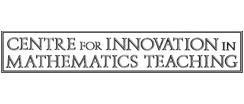Manipulating Algebraic Expressions
This set of resources provides the opportunity for students to simplify and manipulate algebraic expressions, factorise quadratic expressions and simplify expressions involving sums, products and powers. They will help students to understand the difference between an equation and an identity, use algebra to support and construct arguments and proofs and interpret simple expressions as functions with inputs and outputs, including inverse and composite functions.
Visit the secondary mathematics webpage to access all lists.
- ALL
- Textbook
- Group work
- Activity sheet
Textbook
Indices and Standard Form
This MEP resource from CIMT is taken from text book 9A.
Indices and standard form covers: index notation, the laws of indices, negative indices, standard form and fractional indices.
The initial file forms part of the textbook. The activities sheet, extra exercises and mental tests compliment the work covered in the textbook. The overhead slides can be used on an interactive whiteboard.
Alongside the pupils' material there are lesson plans which outline the content of the unit, these are differentiated into three levels, ST, A and E as well as suggested routes through them.
Group work
Interpreting Algebraic Expressions A1
In this resource from the DfES Standards Unit, students learn to translate between words, symbols, tables, and area representations of algebraic expressions, recognise the order of operations, recognise equivalent expressions and understand the distributive laws of multiplication and division over addition (expansion of brackets). This unit develops the ideas presented in N5 Understanding the laws of arithmetic. Students will need to recall how to find the area of simple compound shapes made from rectangles and simple indices.
In the next activity students match cards with algebraic expressions to word descriptions and tables. This is designed to help learners interpret the symbols and realise that the symbolism defines the order of operations. Some learners may notice that some expressions are equivalent, e.g. 2(n + 3) and 2n + 6. Students can be challenged to find out if the pairs of expressions always give the same answer, even when fractions or decimals are substituted and to explain why these pairs match for all numbers. Learners are also challenged to match visual images using areas of shapes thus making links across strands. Learning is consolidated using group work developing posters and group and whole class discussion.
These materials exemplify the ideas and approaches adopted in the Standards Unit pilot. To get best value use them in association with the guidance and other materials in Improving Learning in Mathematics: Challenges and Strategies.
Manipulating Surds N11
In this resource from the DfE Standards Unit students identify equivalent surds and develop their ability to simplify expressions involving surds. The starting point for this activity is that students should understand what a square root is and be able to remove brackets correctly.
These materials exemplify the ideas and approaches adopted in the Standards Unit pilot. To get best value from them, we recommend that you use them in association with the guidance and other materials in the resource. Extra guidance can be found here.
Evaluating Algebraic Expressions A4
In this resource from the DfE Standards Unit, students learn to distinguish between and interpret equations, inequalities and identities. Students substitute into algebraic statements in order to test their validity in special cases. Students often use letters in algebra without understanding what they mean. Common misconceptions include believing that a letter can only stand for one particular number, different letters must stand for different numbers or letters can only stand for whole numbers. Such misconceptions often arise when students generalise from a restricted range of examples. This session will build on their knowledge of substitution to reconsider such interpretations
Students work in groups to build posters based on an “Always sometimes never” group activity. Learning is consolidated using whole class discussion.
These materials exemplify the ideas and approaches adopted in the Standards Unit pilot. To get best value use them in association with the guidance and other materials in Improving Learning in Mathematics: Challenges and Strategies.
Activity sheet
Solving Equations
Quadratic equations: exposing and discussing common misconceptions is one of the mathematical moments sessions produced by the Learning and Skills Improvement Service (LSIS). The objectives are
- To explore the different types of quadratic equation, specifically those that factorise and those that do not.
- To review prior learning about the solution of quadratic equations by factorisation and the need to have a solution by other means.
Using a matching cards activity students realise that some equations do not factorise. Ask them to consider what this means: does it mean that the equations do not have solutions?
Some learners might not be able to find integer solutions and conclude that no solutions exist. This is an example of a misconception. They are encouraged to investigate whether or not the quadratics have a solution at all?
Students use the blank cards to provide their own examples of quadratic equations along with their factorisation and solutions. Some students might not be able to find integer solutions and conclude that no solutions exist. This is an example of a misconception This activity can be a useful introduction to session C1: Linking the properties and forms of quadratic equations.
The Language of Mathematics and Proof
This RISP activity is ideal for introducing, consolidating or revising the idea of proof using a mathematical argument and appropriate use of logical deduction.
Students are asked to choose two triangular numbers and find when the difference is a prime number. Students should then be encouraged to attempt to prove their conjecture. The teacher notes suggest a pictorial proof and an algebraic proof.
Suggested extensions are to investigate when the difference of two squares is prime and when the difference of two cubes is prime.
The resource includes student activity sheet supported by teacher’s notes that provide an insight into how the lesson was developed and guidance on how to support and challenge learners.
Functions and Graphs
Mathcentre provide these resources which cover aspects of functions and graphs and are suitable for students studying mathematics at A Level, as well as those students for whom mathematics is an integral part of their course. Some of the topics covered include an introduction to functions, the hyperbolic, trigonometric and polynomial functions, as well as inverse functions and limits of functions.
Comprehensive notes, with clear descriptions, for each resource are provided, together with relevant diagrams and examples. Students wishing to review, and consolidate, their knowledge and understanding of functions and graphs will find them useful, as each topic includes a selection of questions to be completed, for which answers are provided.






